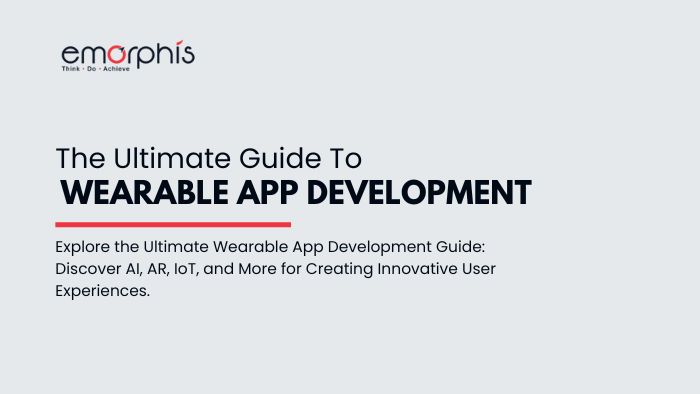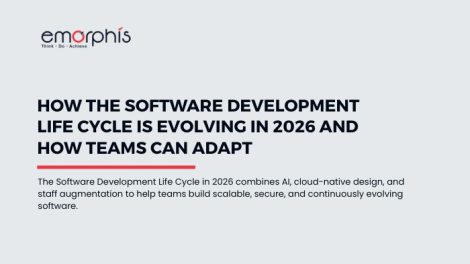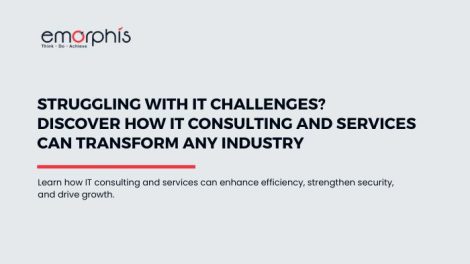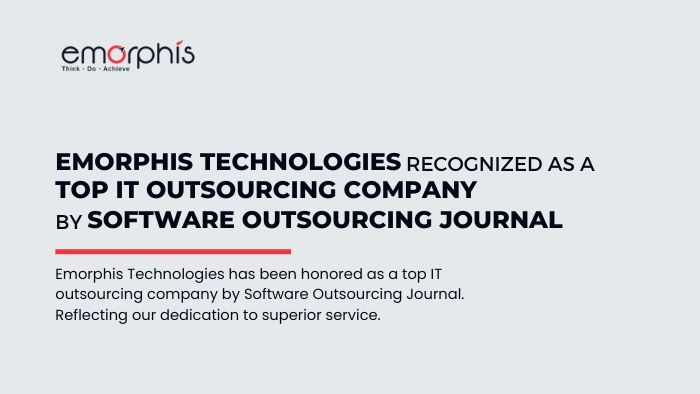Wearable App Development refers to designing and creating applications for wearable devices such as smartwatches, fitness trackers, smart glasses, and other wearable gadgets. These apps are tailored to wearable devices’ unique capabilities and constraints, such as smaller screens, limited input methods, and the need for efficient power consumption.
Wearable technology has emerged as a groundbreaking trend, in fact, promising seamless technology integration into our daily lives. At the heart of this revolution lies wearable app development – the driving force behind the functionality and also, the appeal of these devices.
The Global Wearable App Development Company Services Market is anticipated to grow at a compound annual growth rate (CAGR) of 11.7% from 2020 to 2027, reaching an estimated market value of USD 12.34 billion by 2027, according to a recent report by Verified Market Reports. This rapid expansion is primarily driven by several factors.
Key Factors Driving Wearable App Development
- Adoption of IoT: The integration of wearable technology with the Internet of Things (IoT) in fact, enhances connectivity and functionality, boosting the demand for advanced wearable applications.
- Smart Device Demand: Increasing consumer interest in smart devices, such as smartwatches and fitness trackers, also fuels the need for more sophisticated and user-friendly wearable apps.
- Personalized Services: There is a rising demand for personalized services, particularly in health and fitness, where wearable apps offer tailored insights and in fact, recommendations.
- Health Monitoring Gadgets: The growing popularity of health monitoring devices, which also track vital signs and physical activity, necessitates specialized apps to analyze and display this data.
- Innovative Technology: Continuous advancements in technology, including software development, data analytics, and moreover, user interface design, are crucial for the development of effective and engaging wearable applications.
Overall, the market for wearable app development company services is set for significant growth, driven by technological innovation and an increasing consumer base seeking smart, connected, and personalized wearable solutions.
Understanding Wearable Technology
Wearable technology encompasses a diverse range of devices designed to be worn on the body, each serving a unique purpose. In fact, smartwatches, fitness trackers, augmented reality glasses, and even smart clothing are just a few examples of wearable gadgets that have gained popularity in recent years.
The Rise of Wearable Apps
While the hardware forms the foundation of wearable technology, it’s the software – in the form of wearable apps – that truly unlocks their potential. Wearable apps enable users to access a myriad of features and functionalities tailored to their specific needs, whether it’s tracking fitness goals, receiving notifications, or navigating through augmented reality environments.
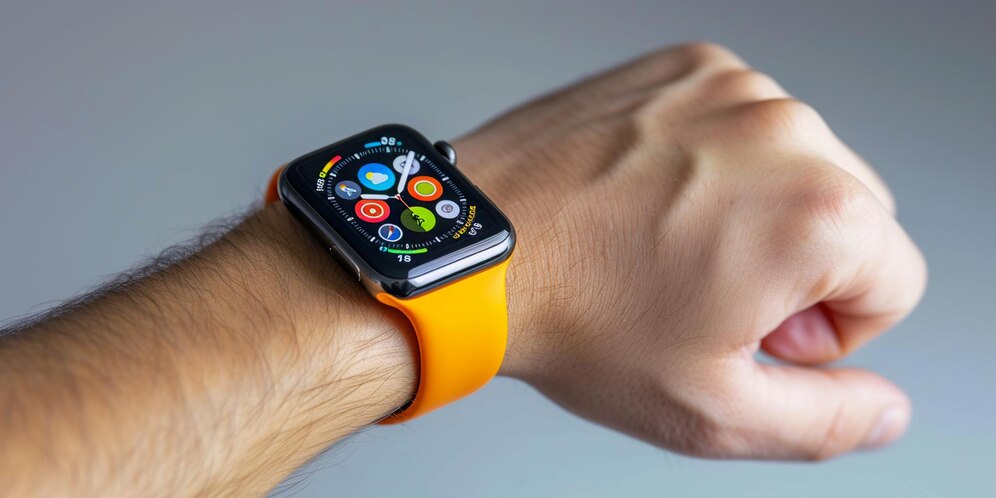
Wearable App Development Trends
The world of wearable tech is booming with the need for innovative and user-friendly apps. Here’s a glimpse into the hottest trends shaping wearable app development.
1. Internet of Things (IoT) Integration
Imagine controlling your smart lights or checking your smart fridge with your smartwatch. In fact, wearable apps are increasingly becoming hubs for controlling interconnected devices, creating a seamless and personalized smart home experience.
2. Focus on User Experience (UX)
With smaller screens and limited input methods, wearable apps also need to prioritize a clear and intuitive UX. In fact, developers are creating custom functionalities optimized for wearables, ensuring a smooth and efficient user experience.
3. The Rise of Health and Wellness Apps
Wearable app development is heavily influenced by the growing interest in health and wellness centers. Apps are incorporating advanced sensors to track real-time health data, moreover, offering personalized feedback and guidance to users.
4. Augmented Reality (AR) Integration
AR is making its way into wearables, with apps overlaying virtual information onto the real world. Imagine getting workout instructions displayed on your smart glasses, or receiving navigation directions without taking out your phone.
Wearable apps collect a lot of personal data. Secure data storage and user ownership are becoming crucial aspects of wearable app development.
6. Artificial Intelligence and Machine Learning
AI and ML are poised to revolutionize wearable apps. By analyzing user data, these technologies can offer personalized recommendations, predict health risks, and even provide real-time coaching during workouts.
7. Enterprise and Industrial Applications
Wearables are no longer just for consumers. Businesses utilize wearable apps for workforce management, safety monitoring, and equipment maintenance. Expect to see more specialized apps catering to various industry needs.
Further, click the link to find details of software product engineering trends.
Key Considerations in Wearable App Development
Developing apps for wearable devices presents unique challenges and considerations compared to traditional mobile or web applications.
- User Experience (UX): Due to the limited screen real estate and interaction capabilities of wearables, UX design plays a crucial role. Apps must be intuitive, easy to navigate, and optimized for quick interactions.
- Hardware Integration: Wearable apps often rely on the device’s sensors and features to deliver personalized experiences. In fact, developers must understand the intricacies of the hardware and leverage its capabilities effectively.
- Performance Optimization: Given the limited processing power and battery life of wearable devices, app performance optimization is paramount. in fact, developers need to prioritize efficiency to ensure smooth operation without draining the device’s resources.
- Data Security and Privacy: Wearable devices collect sensitive user data, such as health and location information. App developers must implement robust security measures to protect this data from unauthorized access or breaches.
- Cross-Platform Compatibility: With a wide variety of wearable devices available in the market, ensuring cross-platform compatibility is essential. In fact, developers should strive to create apps that work seamlessly across different operating systems and device models.

Tools and Technologies for Wearable App Development
Several platforms and frameworks facilitate the development of wearable apps, each offering its unique set of features and capabilities. Some popular tools include:
- Apple WatchKit: Ideal for developing apps for the Apple Watch, WatchKit provides developers with a comprehensive set of tools and APIs for creating rich and interactive experiences.
- Google Wear OS: For Android-based wearable devices, Google’s Wear OS offers developers a range of development tools, including the Wearable Support Library and Android Studio IDE.
- Fitbit SDK: Designed specifically for Fitbit devices, the Fitbit SDK allows developers to create apps and clock faces tailored to the Fitbit ecosystem, leveraging its health and fitness tracking capabilities.
- Unity3D: For augmented reality wearables like Microsoft HoloLens or Magic Leap, Unity3D provides a powerful development platform for creating immersive AR experiences.
Types of Wearable Apps for Various Industries
1. Healthcare and Fitness
- Fitness Tracking Apps: Monitor physical activities like steps taken, calories burned, and distance traveled (e.g., Fitbit, Strava).
- Health Monitoring Apps: Track vital signs such as heart rate, blood pressure, and blood oxygen levels (e.g., Apple Health, Samsung Health).
- Medical Alert Apps: Provide alerts for medical emergencies, medication reminders, and chronic condition management (e.g., MediSafe, MyTherapy).
2. Lifestyle and Entertainment
- Music and Media Apps: Allow users to control music playback, stream audio, and manage media directly from the wearable (e.g., Spotify, Apple Music).
- Social Media Apps: Enable users to receive notifications, read messages, and interact with social media platforms (e.g., Facebook, Twitter).
3. Productivity and Utility
- Task Management Apps: Help users manage to-do lists, set reminders, and track tasks (e.g., Todoist, Microsoft To-Do).
- Notification Apps: Provide instant notifications for emails, messages, and other important updates (e.g., Gmail, Outlook).
- Payment Apps: Facilitate contactless payments and manage financial transactions (e.g., Google Pay, Apple Pay).
- Navigation Apps: Offer turn-by-turn directions and real-time traffic updates (e.g., Google Maps, Apple Maps).
- Travel Apps: Assist with flight bookings, hotel reservations, and itinerary management (e.g., TripIt, Kayak).
5. Sports and Recreation
- Sports Tracking Apps: Monitor and analyze performance in various sports activities, such as running, cycling, and swimming (e.g., Runkeeper, Endomondo).
- Golf Apps: Provide GPS course mapping, shot tracking, and scoring (e.g., Golfshot, Hole19).
6. Retail and E-commerce
- Shopping Apps: Allow users to browse products, receive promotions, and make purchases directly from their wearables (e.g., Amazon, eBay).
- Loyalty Apps: Manage loyalty points, rewards, and special offers (e.g., Starbucks, Walgreens).
7. Industrial and Enterprise
- Field Service Apps: Help field workers manage tasks, report issues, and access information on the go (e.g., Salesforce Field Service, Microsoft Dynamics 365).
- Inventory Management Apps: Enable real-time inventory tracking and management (e.g., Stock Control, NetSuite).
8. Agriculture
- Crop Monitoring Apps: Use sensors to monitor soil health, weather conditions, and crop status (e.g., John Deere, FarmLogs).
- Livestock Tracking: Monitor the health and location of livestock (e.g., Cowlar, HerdDogg).
- Smart Irrigation Systems: Allow farmers to control and optimize irrigation systems remotely (e.g., RainMachine, GreenIQ).
9. Public Safety
- First Responder Apps: Provide real-time data, navigation, and communication for emergency responders (e.g., FirstNet, PulsePoint).
- Disaster Management: Help in planning, coordination, and execution of disaster response strategies (e.g., Crisis Response, FEMA).
- Body Cameras: Apps that manage body-worn camera footage and provide real-time streaming (e.g., Axon, BodyWorn).
10. Manufacturing
- Wearable AR/VR: Assist in assembly line tasks, maintenance, and quality control through AR/VR applications (e.g., Vuforia, Microsoft Dynamics 365 Guides).
- Worker Safety: Monitor worker health and safety conditions on the factory floor (e.g., Guardhat, Honeywell).
- Predictive Maintenance: Use sensors to predict equipment failures and schedule maintenance (e.g., IBM Maximo, Augury).
Wearable app development continues to evolve and expand into various industries, providing innovative solutions that enhance productivity, improve user experiences, and introduce new functionalities unique to wearable technology.

Wearable App Development Process, From Concept to Deployment
1. Ideation and Conceptualization
- Identify Purpose and Target Audience: Define the objectives of the wearable app and identify the target audience to tailor the features and functionalities accordingly.
- Market Research: Conduct market research to understand user needs, competitor offerings, and emerging trends in wearable technology.
2. Requirements Gathering and Planning
- Define Features and Functionality: Collaborate with stakeholders to outline the desired features and functionalities of the wearable app.
- Platform Selection: Choose the appropriate platform(s) based on the target audience and device compatibility (e.g., iOS, Android, or cross-platform development).
- Technology Stack: Determine the technology stack and frameworks required for development, considering factors such as hardware integration and performance optimization.
3. Design and Prototyping
- User Experience (UX) Design: Create wireframes and prototypes to visualize the app’s layout, navigation flow, and user interactions.
- User Interface (UI) Design: Design the visual elements, including colors, typography, and graphical assets, to ensure a cohesive and intuitive user interface.
- Accessibility and Compatibility: Ensure the app’s design is accessible to users with disabilities and compatible with various wearable devices and screen sizes.
4. Development
- Frontend Development: Implement the app’s user interface and user experience design, using appropriate programming languages and development frameworks.
- Backend Development: Develop the backend infrastructure to support features such as data synchronization, user authentication, and real-time updates.
- Hardware Integration: Integrate the wearable app with device-specific sensors, peripherals, and hardware components to leverage their capabilities.
5. Testing and Quality Assurance
- Unit Testing: Test individual components and modules of the app to ensure they function as intended.
- Integration Testing: Verify the interoperability of different app modules and external APIs.
- Compatibility Testing: Test the app on various wearable devices, operating systems, and screen sizes to ensure consistent performance.
- User Acceptance Testing (UAT): Involve real users to validate the app’s usability, functionality, and overall user experience.
6. Deployment and Distribution
- App Store Submission: Prepare the app for submission to the relevant app stores (e.g., Apple App Store, Google Play Store) and adhere to their guidelines and requirements.
- Distribution Channels: Explore alternative distribution channels, such as enterprise app stores or direct installation methods, depending on the app’s target audience and distribution strategy.
7. Post-Launch Support and Maintenance
- Bug Fixes and Updates: Monitor user feedback and analytics to identify and address any bugs or performance issues promptly.
- Feature Enhancements: Continuously iterate and improve the app based on user feedback, technological advancements, and evolving market trends.
- Security Updates: Stay vigilant against security threats and vulnerabilities by applying patches and updates to maintain the app’s integrity and protect user data.
By following a systematic and iterative approach to wearable app development, businesses can ensure the successful creation, deployment, and maintenance of innovative wearable applications that meet the needs and expectations of their target audience.
The Future of Wearable App Development
As wearable technology continues to evolve, so too will the opportunities and challenges for app developers. From advancements in biometric sensors to the integration of artificial intelligence and machine learning, the future of wearable app development holds immense promise.
In conclusion, wearable app development represents a dynamic and exciting frontier in the realm of digital innovation. By understanding the unique characteristics of wearable devices and leveraging the right tools and technologies, developers can create compelling apps that enrich the lives of users in ways we’ve only begun to imagine.
Whether you’re a seasoned developer or a newcomer to the field, embracing the world of wearable app development opens up a world of possibilities, where creativity meets functionality on the wrists, heads, and bodies of millions around the globe.
Wearable App Development, Harnessing Emerging Technologies for Innovative Use Cases
1. Artificial Intelligence (AI) and Machine Learning (ML)
AI and ML algorithms empower wearable apps to provide personalized recommendations, predictive analytics, and intelligent insights. Wearable fitness trackers, for instance, utilize AI to analyze user data and offer customized workout plans and dietary recommendations.
2. Augmented Reality (AR) and Virtual Reality (VR)
AR and VR technologies enhance user experiences by overlaying digital content onto the physical world or creating immersive virtual environments. Wearable AR glasses enable applications like virtual navigation, interactive training simulations, and real-time data visualization.
3. Internet of Things (IoT) Integration
Wearable devices connected to IoT networks can gather and exchange data with other smart devices and sensors. Wearable health monitors integrated with IoT systems enable remote patient monitoring, real-time health tracking, and proactive healthcare interventions.
4. Edge Computing
Edge computing facilitates data processing and analysis directly on wearable devices, minimizing latency and improving response times. Wearable apps leveraging edge computing can perform complex computations locally, enabling real-time gesture recognition, language translation, and contextual notifications.

5. Biometric Authentication
Advanced biometric technologies, such as fingerprint scanners, facial recognition, and voice authentication, enhance security and user authentication in wearable apps. Wearable devices equipped with biometric sensors can securely authenticate users for access control, payment authentication, and identity verification.
6. Wearable Sensors and Health Monitoring
The wearable sensors, including heart rate monitors, accelerometers, and temperature sensors, enable continuous health monitoring and tracking. Wearable apps leveraging sensor data can provide real-time health insights, early disease detection, and personalized wellness recommendations.
7. Blockchain Integration
Blockchain technology ensures the security, transparency, and integrity of data transactions in wearable applications. Wearable apps integrated with blockchain enable secure storage and sharing of sensitive health data, immutable fitness tracking records, and transparent supply chain management.
8. 5G Connectivity
5G networks offer high-speed, low-latency connectivity, unlocking new possibilities for wearable applications. Wearable devices with 5G connectivity can stream high-definition content, support real-time multiplayer gaming, and enable seamless remote collaboration and communication.
9. Voice Interface and Natural Language Processing (NLP)
Voice-controlled wearable apps leverage NLP algorithms to understand and respond to user commands and queries. Wearable smart assistants enable hands-free interaction, voice-controlled navigation, and personalized voice-based reminders and notifications.
10. Contextual Awareness and Environmental Sensing
Wearable devices equipped with environmental sensors, such as GPS, ambient light sensors, and proximity sensors, provide contextual awareness of the user’s surroundings. Wearable apps leveraging contextual data can offer location-based services, adaptive lighting controls, and contextual notifications based on user preferences and behavior.
Incorporating these emerging technologies into wearable app development opens up a vast array of innovative use cases across various industries, from healthcare and fitness to entertainment and enterprise productivity. By embracing these advancements, developers can create compelling and impactful wearable applications that redefine the way we interact with technology in our daily lives.
Wearable App Development cost factors
The cost of developing a wearable app is influenced by several factors, including app complexity, platform choice, design requirements, integration with hardware, data security, backend development, testing, maintenance, team expertise, and geographical location.
Simple apps cost less than complex ones, and developing for multiple platforms increases expenses. Intricate designs, hardware integration, robust security measures, and backend infrastructure add to costs.
Thorough testing and ongoing maintenance are essential but contribute to expenses. Highly skilled teams may charge higher rates, and geographical location impacts pricing.
By considering these factors and collaborating with a reputable development team, you can estimate and manage the cost of developing your wearable app effectively.
Conclusion
In conclusion, the development of wearable apps offers tremendous opportunities for businesses to enhance user experiences, improve productivity, and unlock new revenue streams.
With the proliferation of wearable devices and advancements in technology, wearable app development has become increasingly important across various industries.
Factors such as app complexity, platform choice, design requirements, integration with wearable sensors, data security, and maintenance costs all play crucial roles in determining the overall cost of wearable app development.
By carefully considering these factors and working with an experienced development team, businesses can ensure the successful implementation of their wearable app projects while staying within budget constraints.
Emorphis Technologies, a premier provider of custom software development services, excels in wearable app development. With a seasoned team proficient in crafting high-quality wearable apps for various devices and platforms, including smartwatches and augmented reality glasses, Emorphis Technologies offers tailored solutions to meet clients’ unique needs. Their expertise lies in custom development, intuitive design, seamless integration, stringent quality assurance, and ongoing support and maintenance.
By partnering with Emorphis Technologies, businesses can harness their capabilities to create innovative and impactful wearable apps that drive success and deliver value to their customers.
Emorphis Technologies: Your partner in transforming ideas into reality in the wearable app development space.



